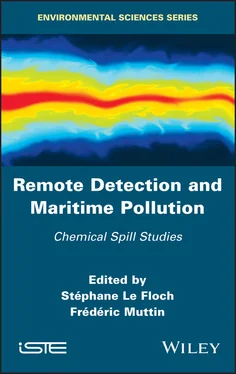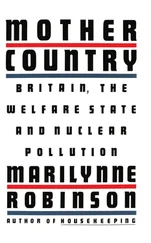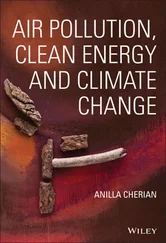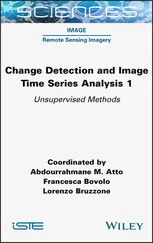Remote Detection and Maritime Pollution
Здесь есть возможность читать онлайн «Remote Detection and Maritime Pollution» — ознакомительный отрывок электронной книги совершенно бесплатно, а после прочтения отрывка купить полную версию. В некоторых случаях можно слушать аудио, скачать через торрент в формате fb2 и присутствует краткое содержание. Жанр: unrecognised, на английском языке. Описание произведения, (предисловие) а так же отзывы посетителей доступны на портале библиотеки ЛибКат.
- Название:Remote Detection and Maritime Pollution
- Автор:
- Жанр:
- Год:неизвестен
- ISBN:нет данных
- Рейтинг книги:5 / 5. Голосов: 1
-
Избранное:Добавить в избранное
- Отзывы:
-
Ваша оценка:
- 100
- 1
- 2
- 3
- 4
- 5
Remote Detection and Maritime Pollution: краткое содержание, описание и аннотация
Предлагаем к чтению аннотацию, описание, краткое содержание или предисловие (зависит от того, что написал сам автор книги «Remote Detection and Maritime Pollution»). Если вы не нашли необходимую информацию о книге — напишите в комментариях, мы постараемся отыскать её.
Remote Detection and Maritime Pollution — читать онлайн ознакомительный отрывок
Ниже представлен текст книги, разбитый по страницам. Система сохранения места последней прочитанной страницы, позволяет с удобством читать онлайн бесплатно книгу «Remote Detection and Maritime Pollution», без необходимости каждый раз заново искать на чём Вы остановились. Поставьте закладку, и сможете в любой момент перейти на страницу, на которой закончили чтение.
Интервал:
Закладка:
Table of Contents
1 Cover
2 Title page
3 Copyright First published 2020 in Great Britain and the United States by ISTE Ltd and John Wiley & Sons, Inc. Apart from any fair dealing for the purposes of research or private study, or criticism or review, as permitted under the Copyright, Designs and Patents Act 1988, this publication may only be reproduced, stored or transmitted, in any form or by any means, with the prior permission in writing of the publishers, or in the case of reprographic reproduction in accordance with the terms and licenses issued by the CLA. Enquiries concerning reproduction outside these terms should be sent to the publishers at the undermentioned address: ISTE Ltd 27-37 St George’s Road London SW19 4EU UK www.iste.co.uk John Wiley & Sons, Inc. 111 River Street Hoboken, NJ 07030 USA www.wiley.com © ISTE Ltd 2020 The rights of Stéphane Le Floch and Frédéric Muttin to be identified as the authors of this work have been asserted by them in accordance with the Copyright, Designs and Patents Act 1988. Library of Congress Control Number: 2020942928 British Library Cataloguing-in-Publication Data A CIP record for this book is available from the British Library ISBN 978-1-78630-639-5
4 Forewords
5 PART 1: Remote Sensing Means
1 POLLUPROOF Project
1.1. Introduction 1.2. POLLUPROOF project 1.2. POLLUPROOF project 1.2.1. Objectives The POLLUPROOF (PROOF improvement of HNS maritime POLLution by airborne radar and optical facilities) project would enhance the capabilities of French Customs to detect, locate and classify pollutants (other than hydrocarbons) originating from ship emissions (including particulates), in order to collect evidence for the prosecution of offenders while ensuring an effective intervention in the case of accidental discharge at sea. The project is funded by ANR ECO-TECH 2013, and the members of the consortium have a recognized and complementary expertise in the field of aerial detection and marine pollution: ONERA, DGDDI, CEDRE, CEPPOL, Agenium, AVDEF and DRDC. In addition to the consortium, Transport Canada (TC) acts as an end-user and member of the steering committee. The project began in January 2014 and concluded in mid-2017. The objectives of this project are: 1 1) to verify the ability to detect, locate and classify at least three of the six most noxious liquid substances transported by sea in Europe; 2 2) to achieve a reduction of spilled noxious liquid substances equivalent to the level for hydrocarbon emissions; 3 3) to develop a stronger policy to control the release of noxious gases within the sulfide emission control areas (SECA). These objectives will be achieved by: – deployment of radar (SAR/SLAR) and optical sensing (hyperspectral cameras) capabilities for detecting liquid pollutants at sea; – evaluation of the complementarity of optical and radar information; – identification of gaseous discharges of engine emissions and liquid pollutants using hyperspectral analysis. To accomplish these activities, the POLLUPROOF project will analyze the needs of French Customs regarding aerial detection and will proceed with: – calibration of optical measurements on liquid pollutants in mesoscale (test-tank) experiments located at CEDRE; – airborne measurements of sea spills using hyperspectral optical and radar sensors, following the test-tank analysis; – algorithm development for detection, location and classification of pollutants. The consortium will then produce a data gathering evidence methodology. French Customs staff will evaluate the effectiveness and applicability of these advances using a human–machine interface.
1.3. Experimental approach 1.3. Experimental approach The experimental approach is divided into two parts: first, the calibration of optical sensors on liquid pollutants in mesoscale experiments; second, airborne measurements of sea spills using hyperspectral optical and radar sensors.
1.4. Conclusion 1.4. Conclusion The POLLUPROOF project aims to set up a procedure for collecting evidence of illegal maritime pollution from noxious liquid substances using airborne sensors. To achieve this goal, an experimental approach was divided into two parts. First, optical sensors were calibrated in a mesoscale spill experiment. Then, optical and radar sensors were implemented in a realistic experiment at sea to image the slicks from noxious substances. The optical and radar results obtained during these experiments are beyond the scope of this presentation and will be presented elsewhere. However, they are clearly promising and demonstrate how hyperspectral sensors are complementary to classic optical and radar sensors for the detection of chemicals at the sea surface. The research presented in this chapter is part of the POLLUPROOF research program (ANR-13-ECOT-007) funded by the French National Research Agency (ANR). The authors are very grateful to everyone involved in the experiment at sea (ONERA, CEDRE, AVDEF, DGDDI and the French Navy).
1.5. References 1.5. References [CED 15] CEDRE ACCIDENTAL WATER POLLUTION, Database of spill incidents and threats in waters around the world, available at: http://wwz.cedre.fr/en/Resources/Spills , (accessed June 2020), 2015. [CUN 15] CUNHA I., MOREIRA S., SANTOS M.M., “Review on hazardous and noxious substances (HNS) involved in marine spill incidents – An online database”, Journal of Hazardous Materials , vol. 285, pp. 509–516, 2015. [MAR 73] MARPOL, International convention for the prevention of pollution from ships, 1973, as modified by the Protocol of 1978 relating thereto and by the Protocol of 1997, International Maritime Organization (IMO), available at: http://www.imo.org (accessed June 2020), 1973. [OLA 09] OLAFSEN G., “Chemical tanker trade”, Chemical and Product Tanker Conference, Back to Fundamentals , London, UK, March 10–11, 2009. [OPR 00] OPRC, Protocol on Preparedness, Response and Co-operation to pollution Incidents by Hazardous and Noxious Substances, International Maritime Organization (IMO), available at: http://www.imo.org , (accessed June 2020), 2000. Chapter written by Sophie CHATAING, Sébastien ANGELLIAUME, Pierre-Yves FOUCHER, Eldon PUCKRIN and Stéphane LE FLOCH.
2 Multifrequency Radar Imagery and Characterization of Hazardous and Noxious Substances at Sea
2.1. Introduction 2.2. Experimentation at sea
2.3. Methodology
2.4. Results and discussion
2.5. Conclusion
2.6. Acknowledgments
2.7. References
3 Remote Sensing of HNS using Longwave Infrared Hyperspectral Imaging
3.1. Introduction 3.2. LWIR hyperspectral remote sensing capability
3.3. Detection and identification of HNS using LWIR hyperspectral sensing
3.4. Conclusion
3.5. References
6 PART 2: Remote Sensing to Support Marine Surveillance Services
4 Customs Expertise in Remote Sensing
4.1. Introduction 4.2. The aircraft
4.3. The equipment
4.4. Airborne remote sensing processing
4.5. Side-looking airborne radar (SLAR) processing
4.6. Infrared and ultraviolet line scanner
4.7. Standard detection and investigation
4.8. The future, a new multi-mission aircraft
5 Remote Sensing as Evidence in Court
5.1. Introduction 5.2. Legal framework of the offence and the evidence
5.3. Remote sensing: questions and advances
5.4. Conclusion
5.5. References
6 Long-Term Surveillance and Monitoring of Natural Events in Coastal Waters
6.1. Introduction 6.2. Satellite products for long-term surveillance
6.3. Some specific events of natural origin in coastal waters
6.4. Conclusion
6.5. References
7 PART 3: Remote Sensing to Support the Response Strategy
7 VIGISAT Ground Receiving Station and EMSA CleanSeaNet Services
7.1. Introduction 7.2. VIGISAT ground receiving station and detection of pollution in near-real time
7.3. Polluter identification with AIS data flows and drift modeling
7.4. References
8 System-to-system Interface Between the EMSA CleanSeaNet Service and OSERIT
8.1. Introduction 8.2. The EMSA CleanSeaNet service
8.3. OSERIT
8.4. A system-to-system interface between CleanSeaNet and OSERIT
8.5. The Flinterstarincident
8.6. Conclusion
8.7. Acknowledgments
8.8. References
9 Optimizing the Use of Aerial Surveillance Assets in Oil Spill Response Operations
9.1. Introduction 9.2. Assumptions and working hypotheses
9.3. Experimental protocol: testing the primary hypothesis
9.4. Experimental protocol: underlying assumptions and testing of secondary hypothesis
9.5. The case for using SUAS as a force multiplier in spill response coordination
9.6. Appendix 1
9.7. Appendix 2
9.8. References
Интервал:
Закладка:
Похожие книги на «Remote Detection and Maritime Pollution»
Представляем Вашему вниманию похожие книги на «Remote Detection and Maritime Pollution» списком для выбора. Мы отобрали схожую по названию и смыслу литературу в надежде предоставить читателям больше вариантов отыскать новые, интересные, ещё непрочитанные произведения.
Обсуждение, отзывы о книге «Remote Detection and Maritime Pollution» и просто собственные мнения читателей. Оставьте ваши комментарии, напишите, что Вы думаете о произведении, его смысле или главных героях. Укажите что конкретно понравилось, а что нет, и почему Вы так считаете.












